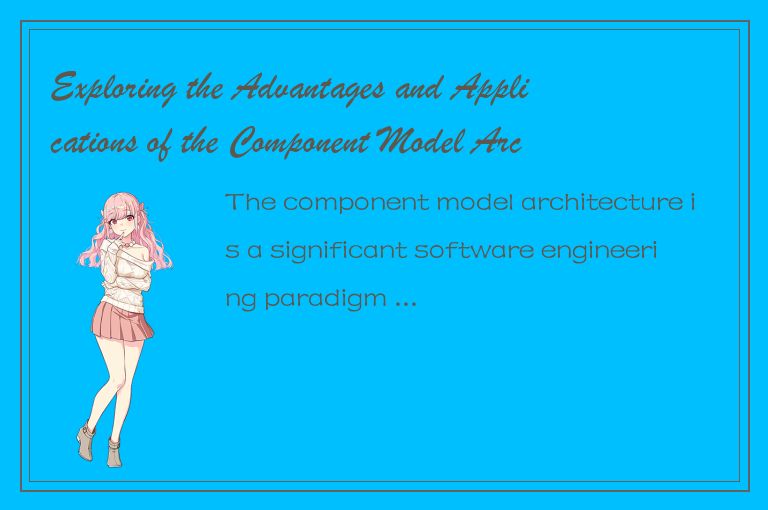The component model architecture is a significant software engineering paradigm that has revolutionized the way software systems are developed, managed, and deployed. It involves the decomposition of software systems into modular, reusable, and self-contained components that can be easily assembled, integrated, and configured to build complex applications.
In this article, we will explore the advantages and applications of the component model architecture and how it has become an essential aspect of modern software development.

Advantages of the Component Model Architecture
Modularity: One of the most significant advantages of the component model architecture is that it promotes modularity. The software system is decomposed into smaller chunks of code, which can be easily maintained, updated, and reused. This means that developers can focus on specific components of the system without worrying about the entire codebase, which not only saves time but also minimizes the risk of introducing errors.
Reusability: The component model architecture also fosters reusability. Components are designed to be self-contained and independent of one another, which means they can be reused in different systems or applications. This saves time and resources by avoiding the need to reinvent the wheel every time a new system is built.
Scalability: Another advantage of the component model architecture is scalability. Components can be easily added or removed from the system, allowing systems to be scaled up or down as needed. This means that the software can grow with the organization or application without requiring a complete redesign.
Cost-Efficiency: The use of the component model architecture can reduce costs associated with software development. Developers can build new applications by simply assembling preexisting components, which means that the development cycle is shorter and resources are focused on developing new components while reusing existing ones.
Applications of the Component Model Architecture
Component model architecture has diverse applications in different industries and fields. The following are some of the most notable applications.
Distributed Systems: The component model architecture is commonly used in building distributed systems. Distributed systems consist of multiple computational nodes, which can vary in location, size, and capability. The use of the component model architecture simplifies the development and management of distributed systems because components can be designed to operate independently and can be dynamically assembled based on the system's specific requirements.
Enterprise Applications: Enterprises regularly use software systems that are complex and comprise multiple interconnected components. The component model architecture is an essential approach for modeling such applications. Enterprises can develop a library of components, such as authentication, authorization, and data storage, that can be assembled to form complex and customized enterprise applications.
Internet of Things (IoT) Applications: The proliferation of IoT devices has introduced new challenges for developers, such as hardware resource limitations, data formats, and different protocols. To tackle these challenges, developers commonly use the component model architecture to decompose the system into smaller, reusable components. These components can be designed to operate on low-power devices, transmit and process data efficiently, and interoperate with other devices using different protocols.
Conclusion
In conclusion, the component model architecture is a crucial paradigm in modern software development. Its advantages, including modularity, reusability, scalability, and cost-efficiency, make it an attractive approach for building software systems of different sizes and complexities. Its applications, including distributed systems, enterprise applications, and IoT applications, demonstrate its versatility and relevance in various fields. Therefore, it is essential for software developers to understand and leverage the component model architecture to build efficient, reliable, and scalable software systems.




 QQ客服专员
QQ客服专员 电话客服专员
电话客服专员